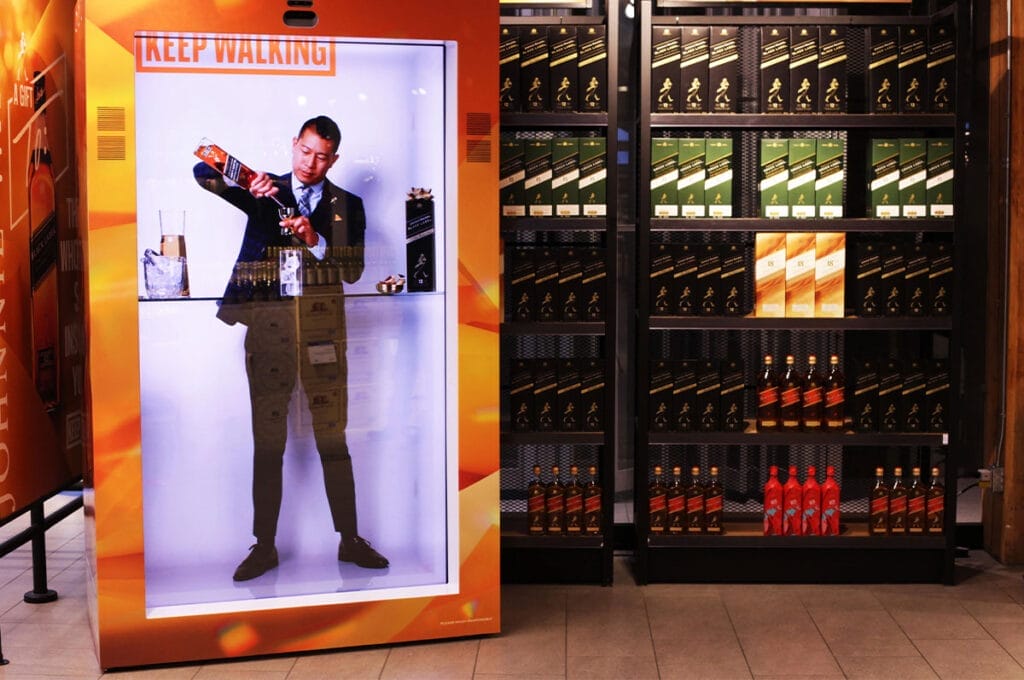As a marketer who has worked with teams involved with 3D advertising campaigns, I’ve seen first hand how impactful 3D models and animation can be. Bringing products to life in 3D helps customers connect emotionally and makes purchases more informed. This guide will explore how to effectively incorporate 3D technology across marketing channels for maximum results.
Key Takeaways:
- 3D advertising allows customers to visually interact with products, increasing engagement and conversions
- Realistic 3D product visualization builds trust and reduces perceived risk in buying decisions
- Immersive 3D ads capture attention and help products stand out in a crowded market
- 3D printing is revolutionizing manufacturing and allows customization at scale
- Interactive 3D experiences are the future of digital advertising and ecommerce
Why Incorporate 3D Advertising into Your Marketing Strategy?
The Unmatched Benefits of 3D Advertising
3D product visualization provides an unparalleled customer experience that static images cannot replicate. Viewing products from all angles and perspectives reduces uncertainty in buying decisions. With the ability to zoom, rotate, and manipulate 3D models, customers get a comprehensive understanding before purchase.
How 3D Ads Enhance Customer Engagement and Interaction
By creating an interactive space to explore products, 3D ads boost engagement substantially. Rather than passively viewing 2D images, customers can play an active role in learning about products. This empowers them to make informed decisions, increasing satisfaction and loyalty.
Comparing Traditional Advertising with 3D Advertisement
Unlike static brochures, print ads, or product photos, 3D advertising is dynamic and customizable for each viewer. Personalizing 3D product configurations and customization in real-time allows creating tailored customer experiences that resonate more deeply.
Navigating the Basics: What Makes a Compelling 3D Ad?
The Key Elements of Effective 3D Design in Advertising
- Realistic materials and lighting to convey product quality
- Smooth and responsive object manipulation for easy interaction
- Strategic use of color to highlight key features and draw attention
- Intuitive controls and minimal learning curve for quick engagement
Utilizing 3D Modeling to Create Impactful Ad Campaigns
The key is realism – high visual fidelity makes products come alive. Every detail from textures, labels, and mechanical parts contributes to a believable product representation. Fluid object manipulation ensures customers can interact without difficulties or distractions.
Examples of Successful 3D Advertising Campaigns
Top brands like Coca-Cola, Johnnie Walker and Porsche have created memorable 3D ads. Key elements include captivating environments, bold colors, dynamic motion, and integrated brand identities seamlessly into 3D. Customer interaction time is typically 2-3x higher for 3D ads proving their unmatched engagement.
1. Coco-Cola
Coco-Cola created the world’s biggest 3D digital billboard was the first of its kind. It was inspired by 3D design and mixed reality technology. The huge digital billboard is six stories tall. It has over 1,700 computerized LED display screens that worked together to create moving 3D images.
2. Johnnie Walker
The ad was for Johnnie Walker scotch whisky’s holiday campaign in Toronto, which uses Canada’s first ever PORTL holographic display to showcase Johnnie Walker products and allow customers to interact with a life-size brand ambassador hologram. The activation is by PORTL content specialists MOUSE 3D DIGITAL in partnership with Diageo at an LCBO store, and allows customers to receive a greeting, view 3D products, and see a cocktail demonstration.
3. Porsche
To promote its new 911 model, Porsche created a print ad spread with an acetate prism that readers can assemble and place on a tablet to see a 3D holographic video of the car come to life. Over 150,000 prisms were produced for this campaign, including 100,000 glass prisms distributed via direct mail along with instructions to view the holographic video.
Exploring the Technical Side: 3D Modeling in Advertising
Understanding 3D Product Design and Visualization
Creating 3D models requires advanced software tools and artistic skill. Modelers focus on precise proportions, realistic materials, proper lighting, and efficient geometry so ads can render smoothly across devices. Rigging allows manipulating models naturally.
3D Animation Techniques for a Dynamic Advertisement
The animation process helps transform static 3D models into living, breathing products. Motion principles like squash and stretch, anticipation, follow through and overlapping action make objects more lifelike. Camera work, dynamic lighting, visual effects add excitement.
The Role of High-Quality 3D Rendering in Creating Realistic Ads
Photorealistic rendering creates life-like 3D images and animations by simulating real-world lighting and materials. Powerful GPU-accelerated render engines leverage ray tracing and advanced shaders to craft stunning, hyperrealistic 3D ads.
Maximizing Impact: How to Effectively Use 3D in Different Types of Advertising
Leveraging 3D for Immersive Outdoor Advertising
Large-scale 3D billboards and building projections create an overwhelming sense of immersion, presence, and excitement that stops consumers in their tracks. This captures attention even in busy urban environments filled with visual noise.
Have you ever seen a zombie tiger in the middle of London? Netflix made that happen to promote the movie “Army of the Dead” by Zack Snyder. They put a 20 meter tall (65 ft) 3D billboard in Piccadilly Lights of a realistic zombie tiger named Valentine walking around a destroyed city.
Incorporating 3D and Augmented Reality (AR) in Digital Advertisements
In digital ads, 3D and AR allow customers to preview products in their intended context. For example, visualizing furniture in a 3D room setup or trying on virtual apparel. This builds connections and makes the experience fun.
In 2017, IKEA used augmented reality (AR) for a Christmas ad campaign. They wanted people to preview Ikea Christmas trees at home, like how the Ikea Place app lets you visualize furniture. The phone app let you point your camera around. It would show the space for the tree. You picked a tree and placed it where you want. You could move around and see the tree all angles and add decorations too. It let people see the trees at home before buying.
3D Billboards and Public Displays: Bringing Ads to Life
3D exteriors and life-like motion turn static billboards into a spectacle. Brands leverage 3D to craft captivating stories around their products in public spaces for maximum visibility and impact.
Situated in Tokyo’s urban landscape, the Cat 3D LED Billboard showcases a sizable animated 3D cat that appears incredibly lifelike. The advanced LED technology creates intricate details and rich colors, amplifying the realism of the cat’s expressions. This engaging billboard has the potential to leave a memorable impact on spectators.
Future Projections: The Evolution and Next Frontier in 3D Advertising
Anticipating the Evolution of 3D Technology in Marketing
As computing power grows exponentially, real-time rendered 3D content will become ubiquitous across ads. Photoreal CG humans and virtual influencers could be the next frontier for an even more lifelike experience.
How 3D Printing Could Change the Advertising Landscape
3D printing unlocks on-demand manufacturing, allowing consumers to purchase customized and personalized products straight from advertisements. This closes the gap between marketing and sales.
Coca-Cola had a contest where you could design a “mini-me” character on their phones like a virtual pet. They had to take care of their mini-me, like feeding and playing with it. This was like the old Tamagotchi toy pets. People who did the best at caring for their mini-me. They got to have their mini-me character printed out physically at the Coca-Cola factory.
The Growing Importance of Interactive 3D Experiences in Advertising
Increasingly, 3D will transition from a visual gimmick to an integral part of the customer journey. Free exploration, customization, and gamification through interactive 3D ads will be crucial for conversions.
Strategies for Successful Implementation of 3D Advertising
Best Practices for Designing a 3D Advertisement
Keep initial downloads small, focus on visual quality and intuitive interaction. Ensure responsive behavior across devices and smooth manipulation. Guide users with subtle visual cues and animated flow.
Mapping the Customer Journey with 3D Content for Enhanced Engagement
Strategically place 3D touchpoints throughout the customer journey – during research phase for exploration, customization before purchase and for support post-purchase. Create a consistent experience.
Measuring the Success of Your 3D Advertising Campaigns
Metrics like interaction times, rotation counts, zoom levels, feature exploration and conversion rates after exposure provide tangible insights into 3D ad effectiveness. These can optimize future 3D content.
My Experience With Working With 3D Design Advertising as a Marketer
In my experience, 3D advertising delivers unmatched results but requires greater upfront investment. The campaign I was a part of, taught me that realistic and smooth 3D visuals are key. For best results, brands should focus on quality over quantity with 3D ads – a few hero pieces can capture attention more effectively than many low fidelity 3D models. Interactivity and conveying emotions through 3D are also critical.
However, I learned that not all products may benefit from 3D advertising. The increase in time and costs associated with high-quality 3D assets makes it crucial to determine ideal applications. There is also a learning curve in getting familiar with 3D pipelines from a marketer’s perspective. But the exponential rise in computing power and 3D tools will soon make this process more scalable.
FAQ
The Wrap Up
This brings us to the end of our comprehensive guide on unlocking the power of 3D visuals for next-level advertising. With countless benefits like increased engagement, conversions and reduced risk, 3D ads deliver fantastic and beautiful results.
As technology progresses, interactive and hyper realistic 3D experiences will redefine ecommerce, social media, digital ads and even outdoor advertising with virtual worlds and AI-driven content. 3D is the future of marketing.
Take the first step by exploring how 3D visualizations can transform your ad campaigns.








